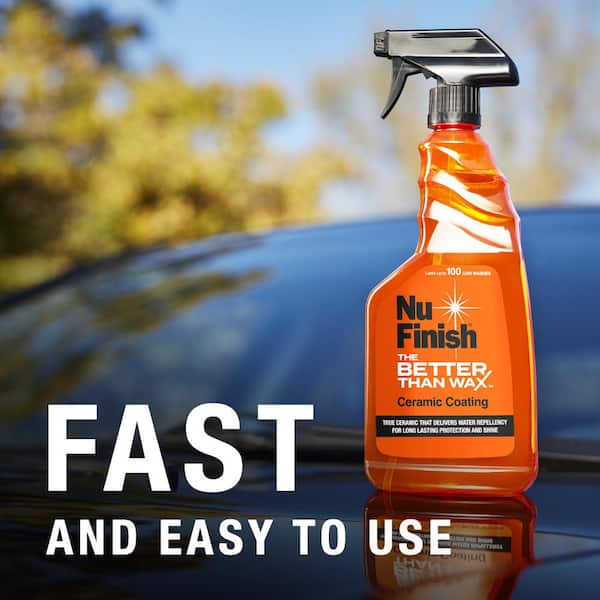The Long-Term Perks of Finding Ceramic Coating Philadelphia for Your Vehicle
Wiki Article
Why Ceramic Finishing Is the Ultimate Remedy for a Remarkable Complete
Ceramic coating has actually emerged as a leading remedy for those looking for a flawless finish for their automobiles, many thanks to its impressive resilience and protective features. What aspects genuinely set ceramic layer apart?What Is Ceramic Layer?

When applied correctly, ceramic coating creates a hydrophobic surface that drives away water and dirt, making it simpler to clean and maintain. Unlike standard waxes or sealers, which commonly offer temporary protection, ceramic coatings can last for a number of years, relying on the item high quality and application method. The procedure of applying ceramic layer requires careful prep work, including detailed cleansing and occasionally paint adjustment, to make sure optimum bonding and efficiency.
Ceramic finishings are not restricted to auto surfaces; they can additionally be made use of on numerous products, including glass, metal, and plastics, providing a functional service for enhancing security. Overall, ceramic finish represents a considerable innovation in surface area defense technology, integrating both aesthetic and useful advantages for a broad variety of applications.
Benefits of Ceramic Coating
While many surface defense alternatives exist, the advantages of ceramic covering stand out because of its special residential or commercial properties and resilient performance. Among the key advantages is its exceptional sturdiness. Ceramic Coating Philadelphia. Unlike conventional wax or sealers that call for constant reapplication, ceramic coatings offer a durable layer that can last for numerous years, significantly reducing maintenance initiativesAn additional significant benefit is boosted security against ecological pollutants. Ceramic layers produce a hydrophobic surface area that drives away water, dirt, and various pollutants, making it less complicated to clean up. This attribute not only maintains the automobile's look however also lessens the risk of deterioration and oxidation, especially in severe climate condition.
Furthermore, ceramic coverings provide superior resistance to UV rays, preventing fading and degradation of paint gradually. This UV protection is crucial for keeping the visual value of automobiles and surface areas subjected to route sunlight.
Additionally, the shiny coating achieved with ceramic finishing improves the overall aesthetic charm, giving surface areas a showroom-quality sparkle. In general, ceramic coatings stand for a considerable improvement in surface security modern technology, supplying enduring benefits that provide to both useful and aesthetic requirements.
Just How It Works
Comprehending the scientific research behind ceramic coatings reveals just how they provide such remarkable defense and longevity. At its core, a ceramic layer is a liquid polymer that chemically bonds with the lorry's manufacturing facility paint.
The application process entails multiple steps, including surface preparation, which is important to achieving ideal adhesion. When applied, the coating undergoes a healing procedure, throughout which it sets and creates a semi-permanent bond with the paint surface area. This bond is what distinguishes ceramic finishes from standard waxes and sealers, supplying a longer-lasting protective barrier that can endure for years.
Furthermore, the density of the finish you could look here can boost its safety qualities, making sure that it can endure rough problems. Eventually, the scientific research of ceramic layers combines advanced products with ingenious application techniques to deliver an unparalleled level of defense and visual improvement for vehicles.
Comparison With Conventional Techniques
When contrasted to standard paint defense approaches such as sealants and waxes,The benefits of ceramic finishings become specifically apparent. While waxes offer a short-term sparkle, typically lasting a couple of weeks to a number of months, ceramic finishings provide a lasting safety layer that can sustain for several years. This toughness significantly lowers the frequency of reapplication, making ceramic coatings an extra cost-effective remedy gradually.Additionally, standard approaches often require extensive preparation and several applications to accomplish an acceptable degree of security. On the other hand, ceramic layers bond at a molecular degree with the lorry's surface area, producing a robust guard against environmental pollutants like UV rays, acid rain, and road salts. This bond enhances the car's resistance to scratches and swirl marks, which prevail with conventional waxes and sealers.
Additionally, the hydrophobic residential properties of ceramic coverings fend off water and dirt, resulting in easier cleansing and upkeep. On the other hand, wax and sealant-treated surfaces can bring in crud, demanding even more constant washing - Ceramic Coating Philadelphia. On the whole, ceramic coverings not only offer exceptional defense but additionally supply a more long-lasting and visually appealing surface, developing them as the favored choice for discerning lorry proprietors
Application and Upkeep Tips

Making use of a foam applicator, apply the layer in small areas, adhering to the producer's standards concerning density and overlap. Allow adequate curing time in between layers, typically 24 hr, to make certain proper bonding. After application, it is crucial to avoid exposure to water or extreme elements for at least a week to read more permit the layer to fully heal.
For upkeep, clean the automobile regularly with pH-balanced soaps and prevent rough materials. Touchless automobile washes are advised to decrease scratching. Additionally, using a ceramic upkeep spray can improve the coating's hydrophobic residential properties and long life. Regular inspections for any indications of wear will certainly assist preserve the finish's stability and maintain that excellent finish.
Final Thought
In final thought, ceramic layer emerges as a premium choice for achieving a remarkable vehicle surface. By creating a durable bond with manufacturing facility paint, ceramic finishing successfully shields versus scrapes, UV rays, and environmental impurities.
Report this wiki page